Romanian traditions
As I was born in Romania and I lived there my first 12 years, I can share with you some Romanian stories and traditions. Living in Italy and getting acquainted with local traditions, over time, made me even more curious about my own roots and it was possible for me to look at them with different eyes. Thanks to my parents, my relatives and the social medias I also discovered many new things about my country.
Living in Romania
Geography is important: it influences our mood, it shapes our traditions and it basically draws our daily life. Romania has very high temperatures in summer (in cities, while in mountain regions it is much colder) and very low temperatures in winters.
Romanians fight the hot urban climate by spending time in the nature: due to a recent urbanization of the country many families still have their grandparents living in small villages. Each time they have the opportunity they return to their homeplace or find new natural landscapes: it is very common among Romanians to meet for a barbecue or a picnic, even if there is nothing to celebrate.
A very common meal that they prepare on these occasions is any kind of meat on grill but, especially, litterally "little" pieces of minced meat: mititei. They can be prepared at home but it is better to buy them, for the multiple ingredients the recipe requires. They are a mix of beef and sheep meat, spices, drops of lemon, sodium bicarbonate, garlic and other ingredients that are not easily findable (even in Romania). They go very well with mustard and beer.
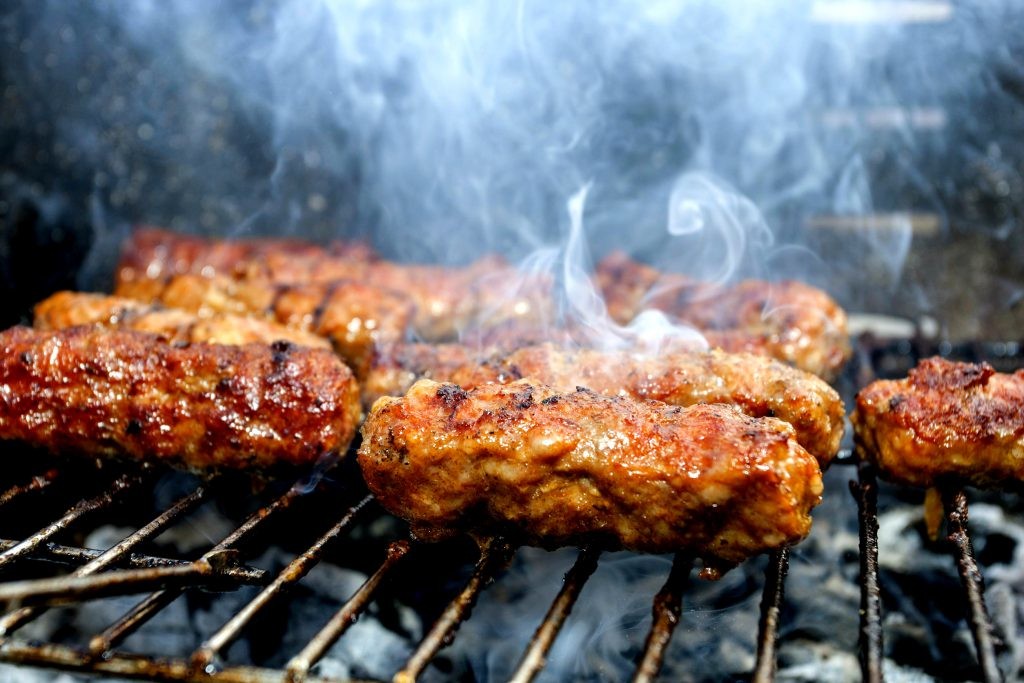
If you go in my city, Focsani, you will understand how much this street food is appreciated by the smell of the local products market and the cheerful atmosphere it creates!
The hot temperatures are also fought by eating a lot of watermelon: this fruit is very good during summer especially for the high percentage of water it contains and it is also very very sweet. Also you can find many other fruits which come from the local gardens.
In summer, we also use to eat a lot of ears of corn: we boil them or grill them. When I was little we used to make a little bonfire and to cook meat and vegetables like ears of corn on it.
There is a dish that in Romania we use to eat almost everyday and that I personally adore: ciorba (soup). There are many versions of it and it can be cooked with many ingredients: what never changes is the high percentage of water it contains and many of these versions involves a lot of vegetables. They can be made with beef, chicken, fish, sheep or pork meat, they can be white (to which we add sour cream, vinegar and garlic) or red (usually vegetables soups) to which we add some tomato sauce. We also make ciorba with beans or meatballs, made of rice and pork meat. Or we also have a springtime version: we gather nettle and we make some wonderful soup out of it to which we add butter milk. We eat it with fresh bread or pickled chilli pepper and it fills our homes with an amazing smell!
Talking about bread we have something to say on the subject: we eat a very soft kind of bread, with a golden and thin crust. This version is particularly good with ciorba but we also like it with buttermilk, which in Romania we use to drink like water and it is also very healthy. In our bakeries you can find many other very fresh stuff: in my city almost everything in the bakery is fresh out of the oven. We use to bake many types of bagels: fluffy, crunchy, sweet or salted, with poppy seeds or with sesame seeds and honey. We usually eat them for breakfast with buttermilk, together with other local specialities.
We also make salted pies made with meat and a lot of spices. Or we make little salad or sweet pies with cheese. These are the principal types of "placinta", that you absolutely cannot miss: then we also have other versions. The traditional placinta, at our home, was that with cheese but also placinta with homemade jam.
Romanian Christmas
In winter the persistent cold weather makes it possible for the snow to cover all the country: it can create a thick carpet and it is common to see many snowmen around. In our country each and every kid used to have their own sleigh, made of wood and iron. My parents told me that in their childhood they used to participate in local competitions using their sleigh on very high slopes.
Romanian Christmas traditions are a mixture of cheerful songs, good dishes, and old practices. Firstly, this winter celebration lasts from the 25th to the 27th of December: three days of holiday instead of the two days of the Italian Christmas days.
During Christmas time children, in group, use to go in front of each door in their neighborhood and ask if they are welcomed to sing the traditional songs, and the audience offers them apples and nuts or, nowadays, money. These traditions are less followed in the cities, where their flats make it less possible to recreate the festive spirit. The world is changing and cultures, with the atomization of societies, are losing their imprinting power.
In Romania, differently from other countries, Christmas begins the 25th and the days before are exclusively dedicated to cleaning, cooking and finishing all the arrangements. Is also very important, before Christmas, to live a humble lifestyle (we use to stop eating meat and dairy products in the week before Christmas day) and to keep all the good things for the three sacred days. While in Italy and other countries Christmas begins on the evening of the 24th of December with a big dinner, in Romania it starts on the day after: after going to Church, we share a big lunch together.
On these days, we don't cook anything except for the grilled meat: the Christmas specialities are sarmale, calbas, cozonac, smoked meat, homemade sausages, toba, etc. The old tradition involves fresh pork meat: in the village in which my grandparents live, they use to raise animals so the days before Christmas they can use the meat for the Christmas dishes and we usually use to taste the tender pork rind.
The most widely known Romanian dish is sarmale: they are made of meat, rice, spices and some vegetables and they are presented as meatballs rolled in vine or cabbage leaves. Where I live they are eaten with polenta, in romanian mamaliga, and sour cream, but I know there are other versions (in other places they can also be made only with meat and spices).
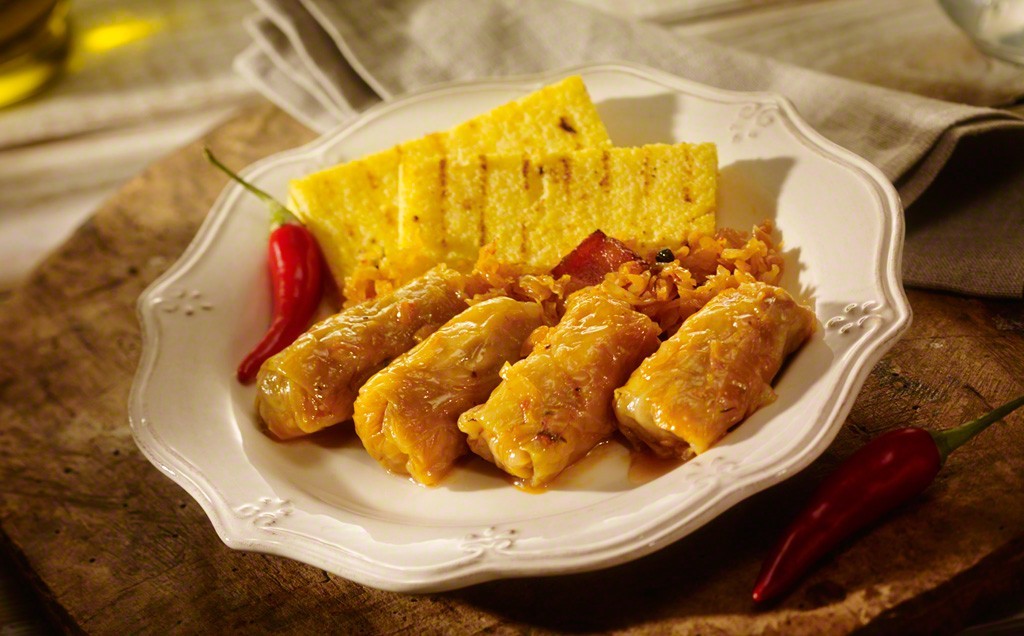
Another dish, very similar, is that of calbas (that is how it's called in my city, in other places it is caltabos): it is similar by ingredients to sarmale, but it contains exclusively rice and minced meat (with more fat) and they look like the Scottish haggis (but thinner) or the Italian cotechino. As it contains a lot of fat meat it is recommended to eat them with pickles and polenta.
For Christmas we prepare cozonac: a kind of pastry which comes in a particular shape. They have a texture similar to that of the bread but they contain also milk and eggs. They are yellow inside and brown outside and at the core of this big roll there can be sweet cheese and rasins, walnuts and cocoa or pieces of colored and sweet jelly cubes. When I was little my grandmother used to make some of any of these kinds and she cooked them in big ovens made of stone. Another similar pastry has a round and donut-shape, it is cheesy and beautifully decorated: I'm talking aboutcolac.


Cozonac
We usually decorate our Christmas tree very late (usually the 24th of December) and we leave it like that until Epiphany: we enjoy it for a brief period of time but as we have many forests in our country we use to have a real fir tree in our homes.
Romanian Easter
Following the Romanian traditions and living in Italy has the consequence that it often happens to celebrate Easter without being on holiday: the italian and the romanian Easter are not the same as they have different ways for establishing the spring equinox day.
On this holiday, we use to go to Church at midnight on Easter night and we take with us a candle: at the Church we will "take sacred light" and in the morning we use to put some coins and a red-painted egg in a glass and to wash our face with some of that water. We have the tradition, that is still followed by many Romanians, to colour the eggs with red (or other colors) paint: many people still use to make an art out of this custom and they draw beatiful and colourful shapes and decorations on eggs using different techniques (one of these involves the use of wax).
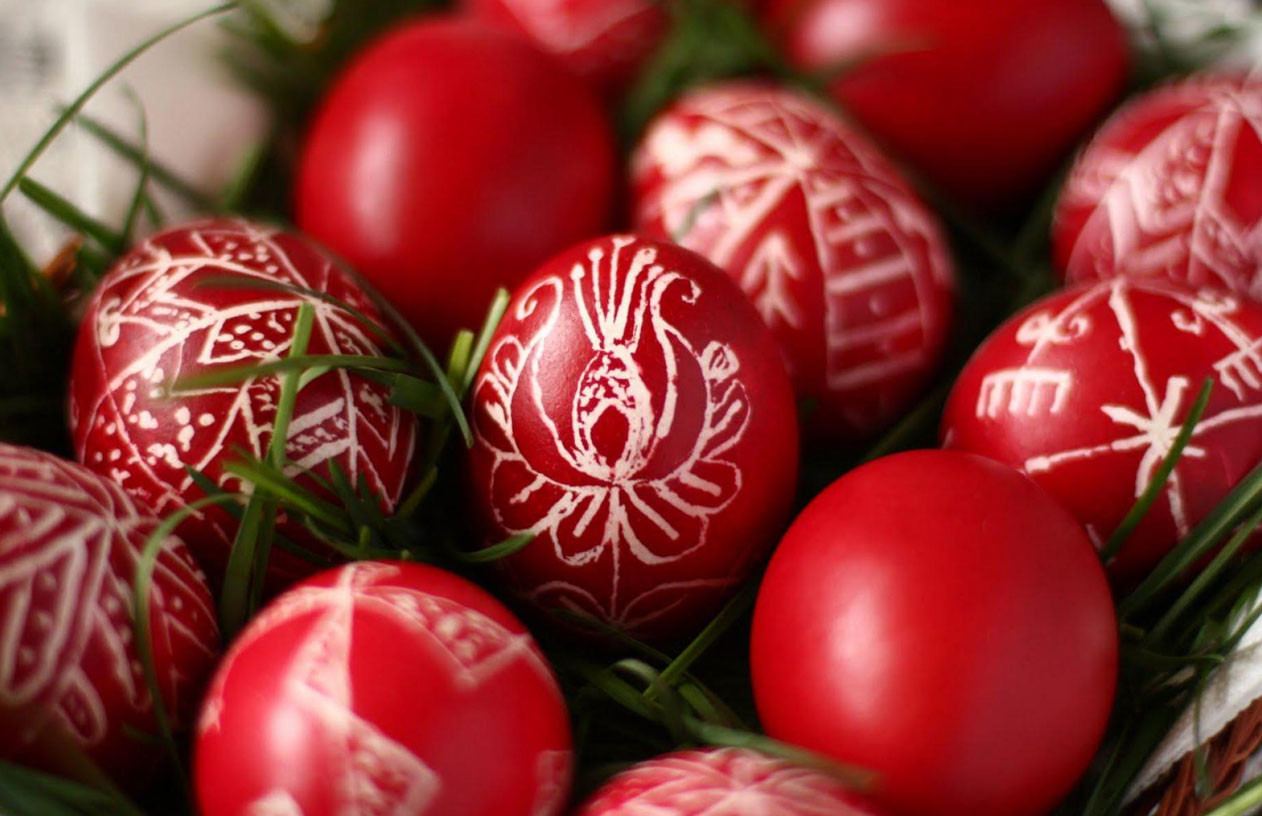
I have learnt how to correctly colour the eggs without breaking them in the boiling process: it is not difficult but you have to pay attention to some details. You can also decorate them using leaves of any kind creating a beautiful natural decoration.
On this holiday the principal dishes are: cozonac (the same like Christmas), pasca (similar to Colac but without the donut shape), drob (similar to patè but with many more vegetables, species and with the addition of eggs). We also eat, on this occasion, sheep meat that we add in many dishes or we cook it on the grill.
This celebration of spring time simbolyzes rebirth and spiritual and material renewal: we clean our houses, our minds, we change the old clothes with new ones and leave behind all our bad habits (hopefully).
On Easter we use to break the colourful eggs in a head-to-head fight: we hit the other participant's egg with the our one to see which one is stronger and does't get broken, while saying the religious Easter sentences (we say those words each time we meet, in a greeting style).
Other traditions
-
Martisor: during the first day of March we use to offer to women, and especially to our mothers, beautiful flowers that grow on spring time. The most common flowers for this occasion are snowdrops and hyacinth, both characterized by a wonderful smell. We offer flowers and the typical gift, martisorul, which is basically a pin that we hold on our clothes: it comes in different shapes, colours, and it can be also a bracelet. What matters is the symbol it represents, that should be a special one: the most known ones are the clover or the coffin cail (both of them mean luck). When Martisor comes we have plenty of these little gifts but only the most special ones will be worn! Another symbol of this tradition is the thin string made of red and white cotton wires, which is put together with the flowers and the martisor.
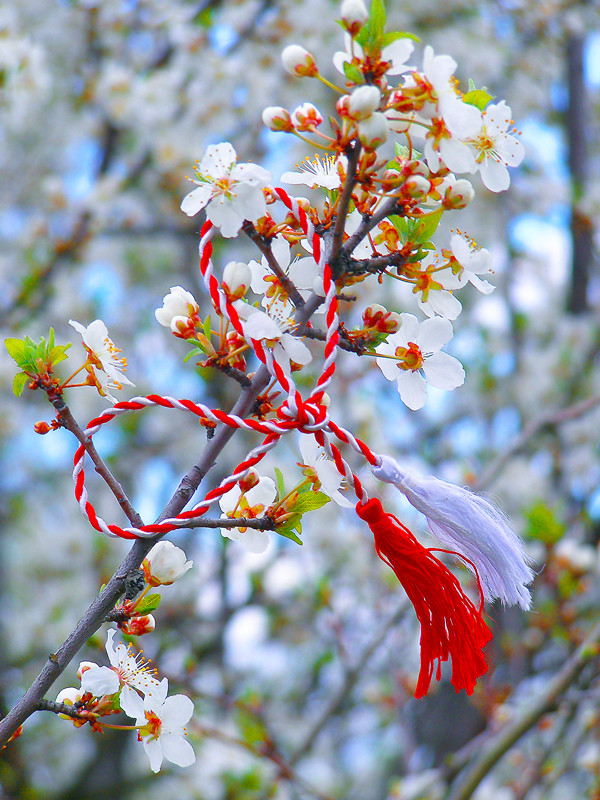
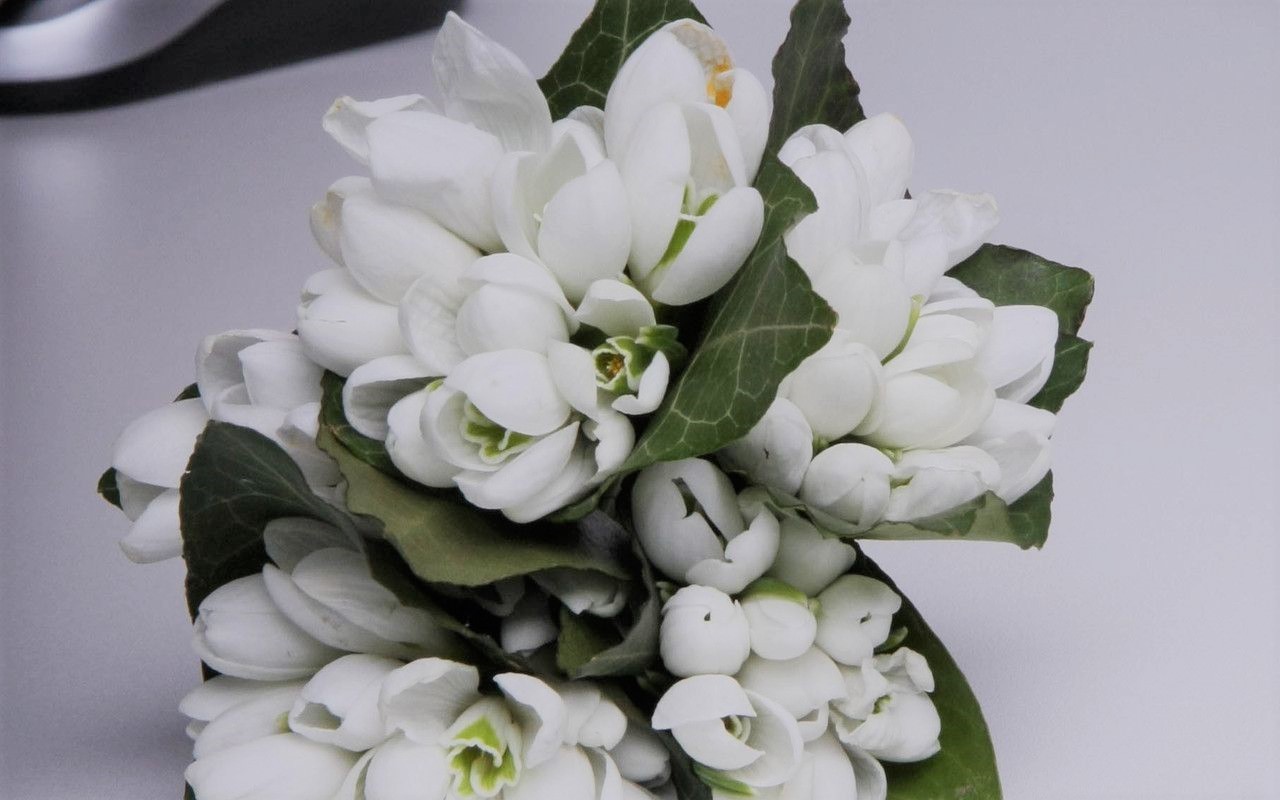
-
Another tradition is that of Dragobete, which I recently discovered: we have our own Saint Valentin, which is celebrated after this quasi-commercial tradition. It symbolizes fertility, in its natural terms: in Romania this celebration takes place on the 24th of February and it involves different customs. On this day, young girls wash their face with some of the late snow in order to have gracious skin. Young girls and boys usually go together in the forest to find the first flowers of spring and the boys would try to catch their beloved girls on the run: the girl will then decide if she will accept to be catched by that boy or not, and if the answer is positive this will be taken as a real engagement. On this day nature is cherished and even animals are sacred.
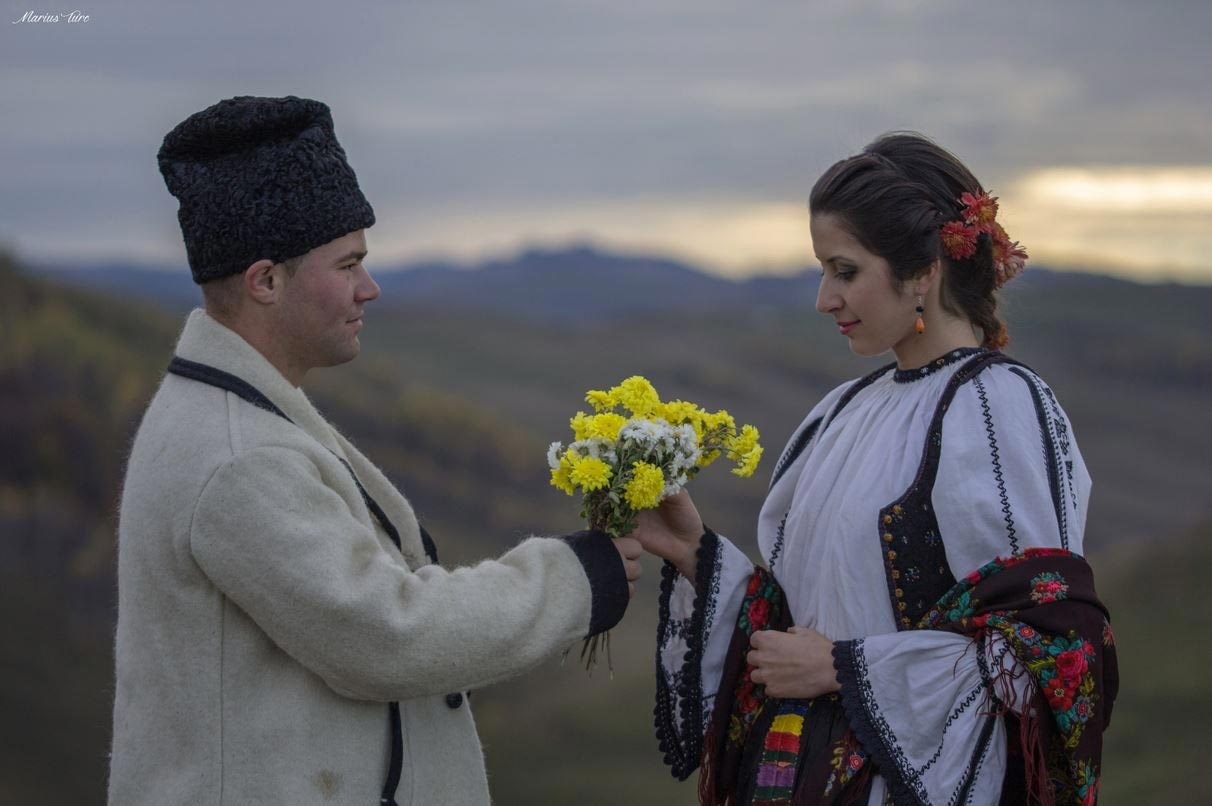
-
While in Italy there is La Befana, on which an ugly witch offers sweets or coal to kids, in Romania we have Saint Nicolae: on this day children polish and put their boots near the door: in the morning, they will discover if their behaviour have been deemed a bad or a good one by the Saint. If they have been good kids they will receive what they whished for, otherwise they will have a little twig.
Photo gallery
Want to have your own Erasmus blog?
If you are experiencing living abroad, you're an avid traveller or want to promote the city where you live... create your own blog and share your adventures!
I want to create my Erasmus blog! →












Comments (0 comments)